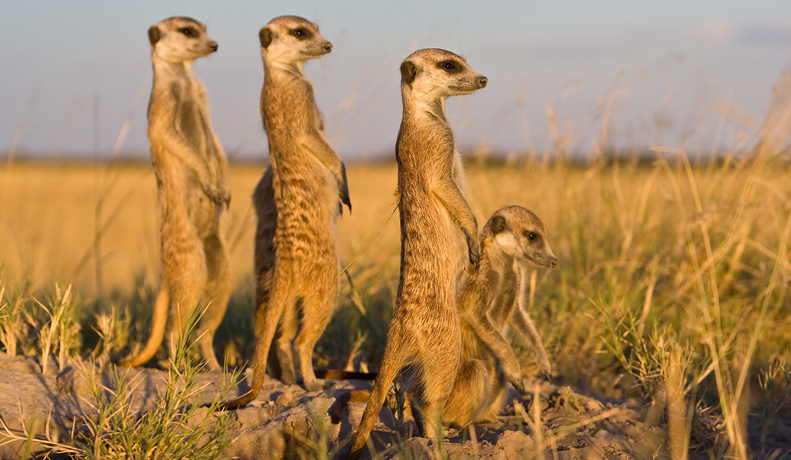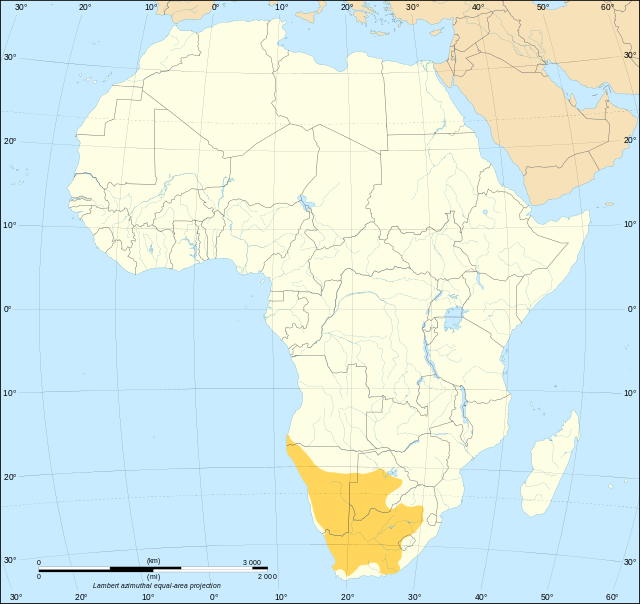Meerkat Surveyors
Biology 342 Fall 2014
Sofia Claesson
Lia Zallar
Group Communication in Meerkats

1) Photo courtesy of Matt Burrard-Lucas
2) Map by Eric Gaba

Life as a Meerkat
Meerkats (suricata suricatta) naturally reside in the plains of southern Africa. They are commonly kept in captivity where their behavior can be closely observed. Meerkats are very social animals with complex hierarchies that practice group living (San Diego Zoo). Their communal living environment has shaped many of their behaviors. In this website we explore meerkat vocalizations through the lens of Tinbergen's guiding questions for animal behavior. These questions address proximate and ultimate viewpoints on a particular behavior through the exploration of mechanism, ontogeny, adaptive value, and phylogeny. Mechanism addresses the physiology necessary for the behavior to occur, ontogeny addresses how the behavior develops, phylogeny addresses the evolution of the behavior, and adaptive value addresses the function the behavior has to increase lifetime reproductive fitness. Lifetime reproductive fitness is the overall reproductive success of an individual's offspring in relation to the rest of the population. Tinbergen's four questions provide the framework we use to explore meerkat vocalization behavior.
Meerkat Facts and Group Dynamics
Meerkats are part of the family Herpestidae, which includes various species of mongooses. They live in groups containing 30-40 individuals, but only a few families. These groups are referred to as a mob or gang and they stake out their own territories. Meerkat mobs live in burrows left by other animals, but create a complex system to connect them. In order to maintain their territory and livelihood, meerkat groups have individuals rotate and stand guard to watch for predators. These individuals make alarm calls to the rest of the group, giving the receivers information about the predator. Meerkat groups also share the labor of raising pups. The entire group will work to raise the pups, not just the biological parents. Adult male and female meerkats are integral to the development and survival of the group’s young. Most aspects of meerkat life are driven by the well-being of the group. Meerkats will alter their behavior to benefit the group, even if it is associated with an individual cost. This seemingly altruistic group behavior can be explained by kin selection. In this theory, animals in a group that are more genetically related to one another than by random chance will help others within the social structure with the purpose of propagating their own genes. An example of this "altruism" is the group dynamics during feeding. Meerkats are omnivores that eat lizards, birds, and insects (San Diego Zoo). Their foraging behavior leaves them vulnerable to various types of predators such as hawks, snakes, eagles, and jackals. In response, meerkats have evolved specialized communication for predator warnings.
Communication
Meerkats have over 30 different types of vocalizations for communication in various situations. These calls are used during times of play, threat, feeding, and much more (Townsend, 2014). Meerkats also make moving calls to relocate the group (Bousquet et al., 2011). In this website we investigate meerkat alarm calls in response to varying predator cues.